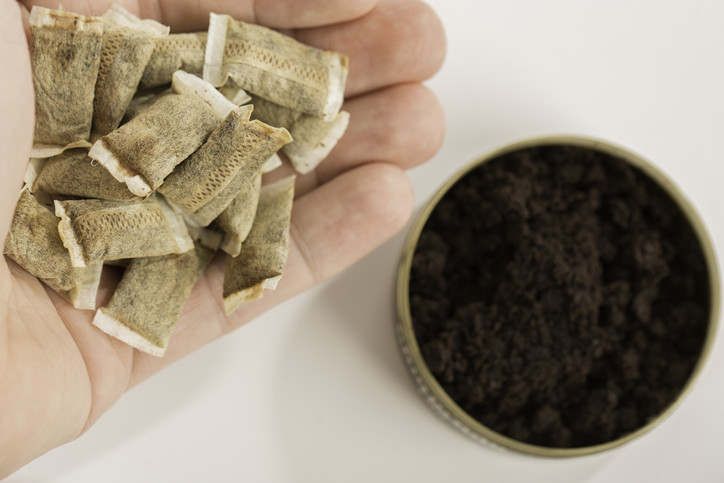The FDA says OK, yet just with respect to the gamble of cellular breakdown in the lungs.
Snuff is a smokeless tobacco like biting tobacco. It seldom stands out as truly newsworthy. Be that as it may, it positively did when the FDA approved a brand of snuff to showcase its items as having a significant wellbeing advantage over cigarettes. Could this be valid? Is it protected to utilize snuff?
What did the FDA authorize as a health claim?
Here’s the approved language for Copenhagen Classic Snuff:
If you smoke, consider this: switching completely to this product from cigarettes reduces risk of lung cancer.
While the statement is true, this FDA action — and the marketing that’s likely to follow — might suggest snuff is a safe product. It’s not. Let’s talk about the rest of the story.
What is snuff, at any rate?
Snuff is a type of tobacco that is finely ground. There are two sorts:
Sodden snuff. Clients place a squeeze or a pocket of tobacco behind their upper or lower lips or between their cheek and gum. They should over and again let out or swallow the tobacco squeeze that gathers. Following a couple of moments, they eliminate or let out the tobacco too. This new FDA activity applies to a brand of clammy snuff.
Dry snuff. This type is grunted (breathed in through the nose) and is more uncommon in the US.The two sorts are accessible in a variety of fragrances and flavors. Clients assimilate nicotine and different synthetics into the circulation system through the coating of the mouth. Blood levels of nicotine are comparative among smokers and snuff clients. In any case, nicotine stays in the blood for a more drawn out time frame with snuff clients.
Why is snuff well known?
As per CDC measurements, 5.7 million grown-ups in the US consistently utilize smokeless tobacco items — that is around 2% of the grown-up populace. A comparative rate (1.6%) of secondary school understudies use it too. That is regardless of limitations on youth showcasing and deals.
What represents its notoriety?
Snuff might be permitted in places that preclude smoking.
It will in general cost not as much as cigarettes: $300 to $1,000 every year versus a few thousand bucks a year paid by certain smokers.
It doesn't need breathing in smoke into the lungs, or presenting others to handed-down cigarette smoke.
Snuff is more secure than cigarettes in somewhere around one manner — it is doubtful to cause cellular breakdown in the lungs.
It might assist some cigarette smokers with stopping.The serious wellbeing dangers of snuff
While the gamble of cellular breakdown in the lungs is lower contrasted and cigarettes, snuff has a lot of other wellbeing chances, including
higher gamble of tumors of the mouth (like the tongue, gums, and cheek), throat, and pancreas
higher gamble of coronary illness and stroke
mischief to the creating young mind
dental issues, for example, staining of teeth, gum sickness, tooth harm, bone misfortune around the teeth, tooth slackening or misfortune
higher gamble of untimely birth and stillbirth among pregnant clients.What’s more, since nicotine is habit-forming, utilizing any tobacco item can immediately turn into a propensity that is difficult to break.
There are additionally the “yuck” factors: awful breath and having to let out tobacco squeeze over and over.
Might this new advertising at any point message about snuff save lives?
Maybe, in the event that numerous smokers change to snuff and quit any pretense of smoking. That could decrease the quantity of individuals who foster smoking-related cellular breakdown in the lungs. It could try and diminish hurts connected with handed-down cigarette smoke.
But on the other hand it’s conceivable the new promoting message will draw in nonsmokers, including adolescents, who weren’t formerly utilizing snuff. A greater market for snuff items could help wellbeing gambles for some individuals, instead of bringing down them.
The new FDA activity is endorsed for a five-year time frame, and the organization should screen its effect. Is snuff a viable method for assisting smokers with stopping? Is a lower pace of cellular breakdown in the lungs counteracted by an ascent in other wellbeing gambles? We don’t have any idea yet. Assuming that the new proof shows more in general wellbeing takes a chance than benefits for snuff clients contrasted and smokers, this new promoting approval might be switched.
The main concern
Assuming you smoke, concerns you have about cellular breakdown in the lungs or other smoking-related medical conditions are legitimate. However, snuff ought not be the best option to assist with getting out from under the smoking propensity. Resolve to stop utilizing more secure choices that don’t include tobacco, for example, nicotine gum or fixes, guiding, and meds.
While the FDA’s choice created news features that outlined snuff as more secure than smoking, it’s essential to take note of that the FDA didn’t support the utilization of snuff — or even recommend that snuff is a protected item. Whether smoked or smokeless, tobacco makes colossal wellbeing weights and languishing. Obviously, utilizing any tobacco product is best not.
Until we have a superior comprehension of its effect, I figure any new promoting of this sort ought to likewise clarify that utilizing snuff accompanies other significant wellbeing chances — regardless of whether cellular breakdown in the lungs isn’t the greatest one.
